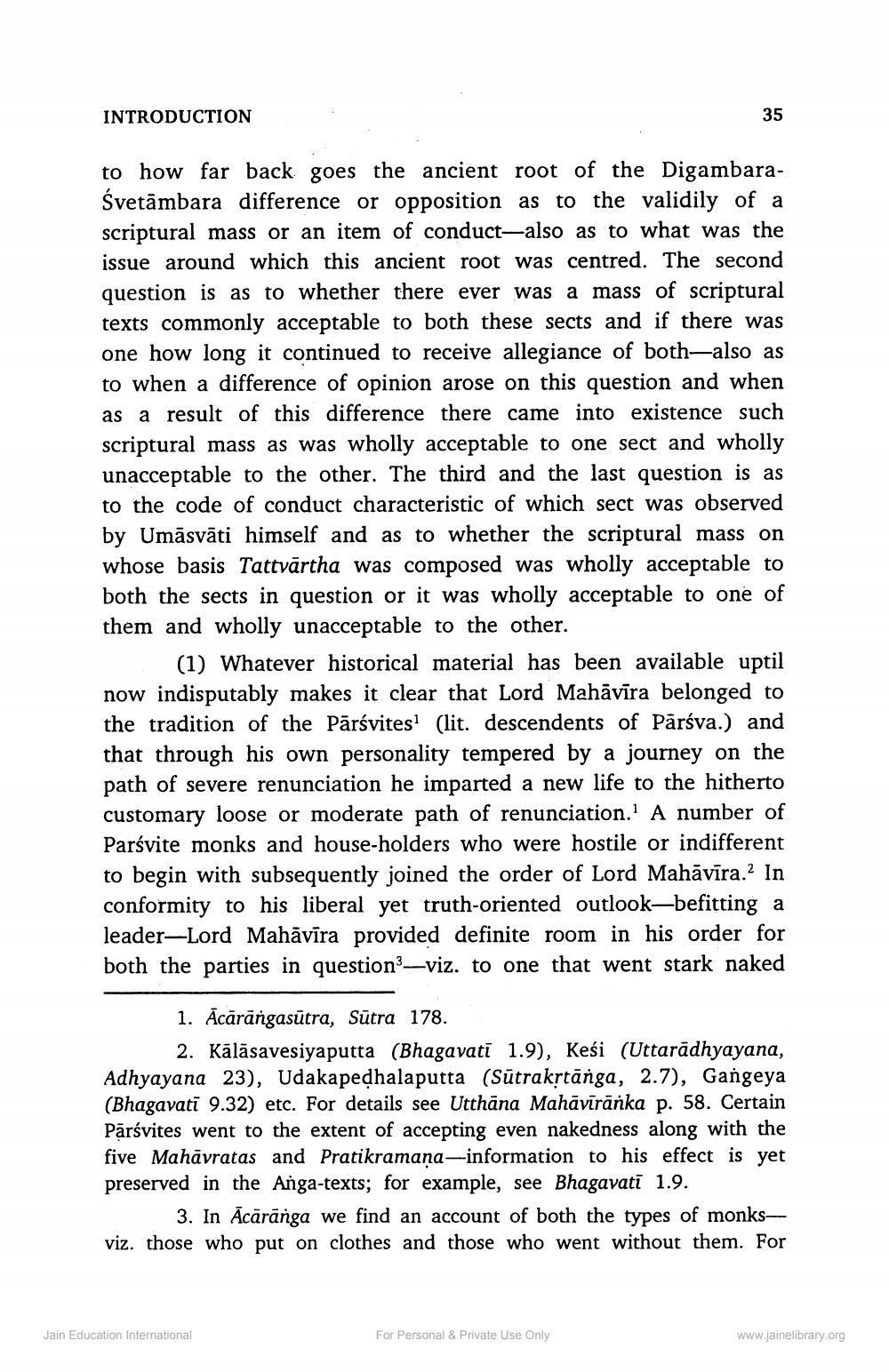________________
INTRODUCTION
35
to how far back goes the ancient root of the DigambaraŚvetāmbara difference or opposition as to the validily of a scriptural mass or an item of conduct—also as to what was the issue around which this ancient root was centred. The second question is as to whether there ever was a mass of scriptural texts commonly acceptable to both these sects and if there was one how long it continued to receive allegiance of both—also as to when a difference of opinion arose on this question and when as a result of this difference there came into existence such scriptural mass as was wholly acceptable to one sect and wholly unacceptable to the other. The third and the last question is as to the code of conduct characteristic of which sect was observed by Umāsvāti himself and as to whether the scriptural mass on whose basis Tattvārtha was composed was wholly acceptable to both the sects in question or it was wholly acceptable to one of them and wholly unacceptable to the other.
(1) Whatever historical material has been available uptil now indisputably makes it clear that Lord Mahāvīra belonged to the tradition of the Pārśvites! (lit. descendents of Pārsva.) and that through his own personality tempered by a journey on the path of severe renunciation he imparted a new life to the hitherto customary loose or moderate path of renunciation. A number of Parśvite monks and house holders who were hostile or indifferent to begin with subsequently joined the order of Lord Mahāvīra.? In conformity to his liberal yet truth-oriented outlook-befitting a leader-Lord Mahāvīra provided definite room in his order for both the parties in question—viz. to one that went stark naked
1. Ācārāngasūtra, Sūtra 178.
2. Kālāsavesiyaputta (Bhagavati 1.9), Keśi (Uttaradhyayana, Adhyayana 23), Udakapedhalaputta (Sūtrakstānga, 2.7), Gangeya (Bhagavati 9.32) etc. For details see Utthāna Mahāvīrāňka p. 58. Certain Pārsvites went to the extent of accepting even nakedness along with the five Mahāvratas and Pratikramana-information to his effect is yet preserved in the Anga-texts; for example, see Bhagavati 1.9.
3. In Ācārānga we find an account of both the types of monksviz. those who put on clothes and those who went without them. For
Jain Education International
For Personal & Private Use Only
www.jainelibrary.org




